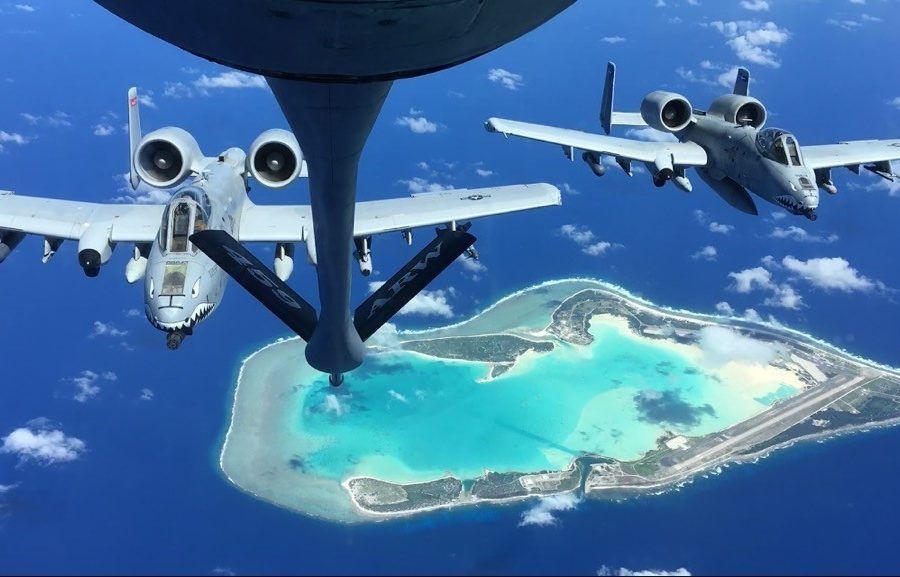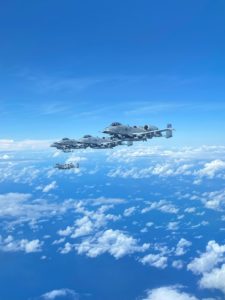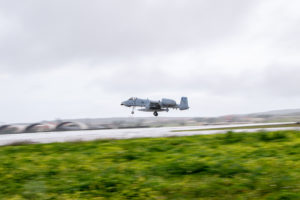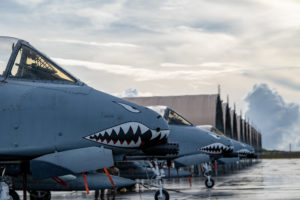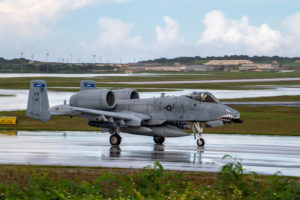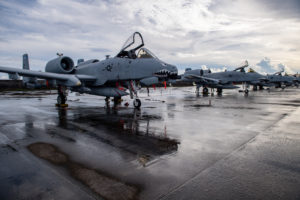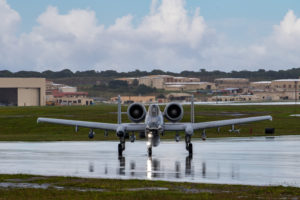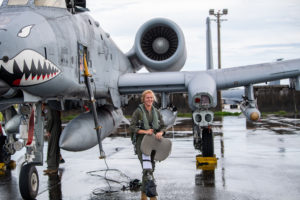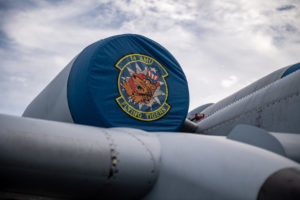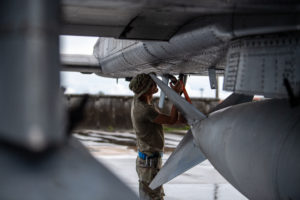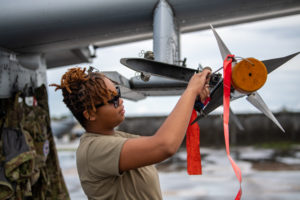A-10 “Warthogs” from the 23rd Wing at Moody Air Force Base, Ga., deployed to Guam and will take part in a Pacific Air Forces exercise to demonstrate the command’s ability to rapidly generate air power in support of the island chain of Palau by coordinating geographically separated forces in contested environments.
The close air support aircraft began arriving at Andersen Air Force Base on Oct. 23, and 23rd Wing commander Col. Russell P. Cook posted to Facebook on Oct. 30 that the final group of Airmen and equipment had arrived at the base.
Cook also wrote that the A-10s are in the region to “conduct agile combat employment operations,” or ACE, while PACAF stated in a release that the aircraft will be involved in a “routine Dynamic Force Employment Operation.”
Dynamic force employment, a concept first introduced in the 2018 National Defense Strategy, aims to make things more “operationally unpredictable” for adversaries, with units quickly deploying unannounced to operate from unpredictable locations.
For the Air Force, that has included shifting from a continuous bomber presence to bomber task force deployments, as well as a continued shift toward ACE, the operational concept whereby smaller teams of multi-capable Airmen can deploy to and work from remote or austere locations and move quickly—in the Pacific, it may entail working from disparate islands, sometimes thousands of miles apart.
All those concepts will be tested as part of Operation Iron Thunder, one of a series of periodic DFE exercises conducted in the Pacific—a PACAF spokesperson told Air & Space Forces Magazine that the exercise “demonstrates the ability of the Air Force to command and control forces spread out through multiple locations and rapidly deploy airpower to support Palau.”
The Republic of Palau, a tiny island chain in the Pacific, has already partnered with the Air Force earlier this year to host ACE exercises.
Cook wrote on Facebook that the 23rd Expeditionary Wing is helping to lead operations as a designated “lead wing” in the Pacific. Air Combat Command announced the designation of five lead wings in January, with those wings expected to “rapidly generate combat power as a deployed force,” sometimes as the leader of units it normally doesn’t control, the wings training together in anticipation of a large-scale conflict that would require massive deployments.
The deployment of A-10s to the Indo-Pacific region marks a departure from the kinds of missions the aircraft has become legendary for—supporting ground troops in the Middle East for years as part of the counterinsurgency fight.
One squadron of A-10s is stationed in the Indo-Pacific region, the 25th Fighter Squadron at Osan Air Base, South Korea. The 25th Fighter Squadron has deployed to Guam, most recently in August 2020.
Still, there are few recent examples of A-10s landing on the strategically important island, which is several thousand kilometers from both South Korea and China. It also comes as B-1 bombers are flying out of Guam as part of a bomber task force rotation that began just a few days before the A-10s arrived.
